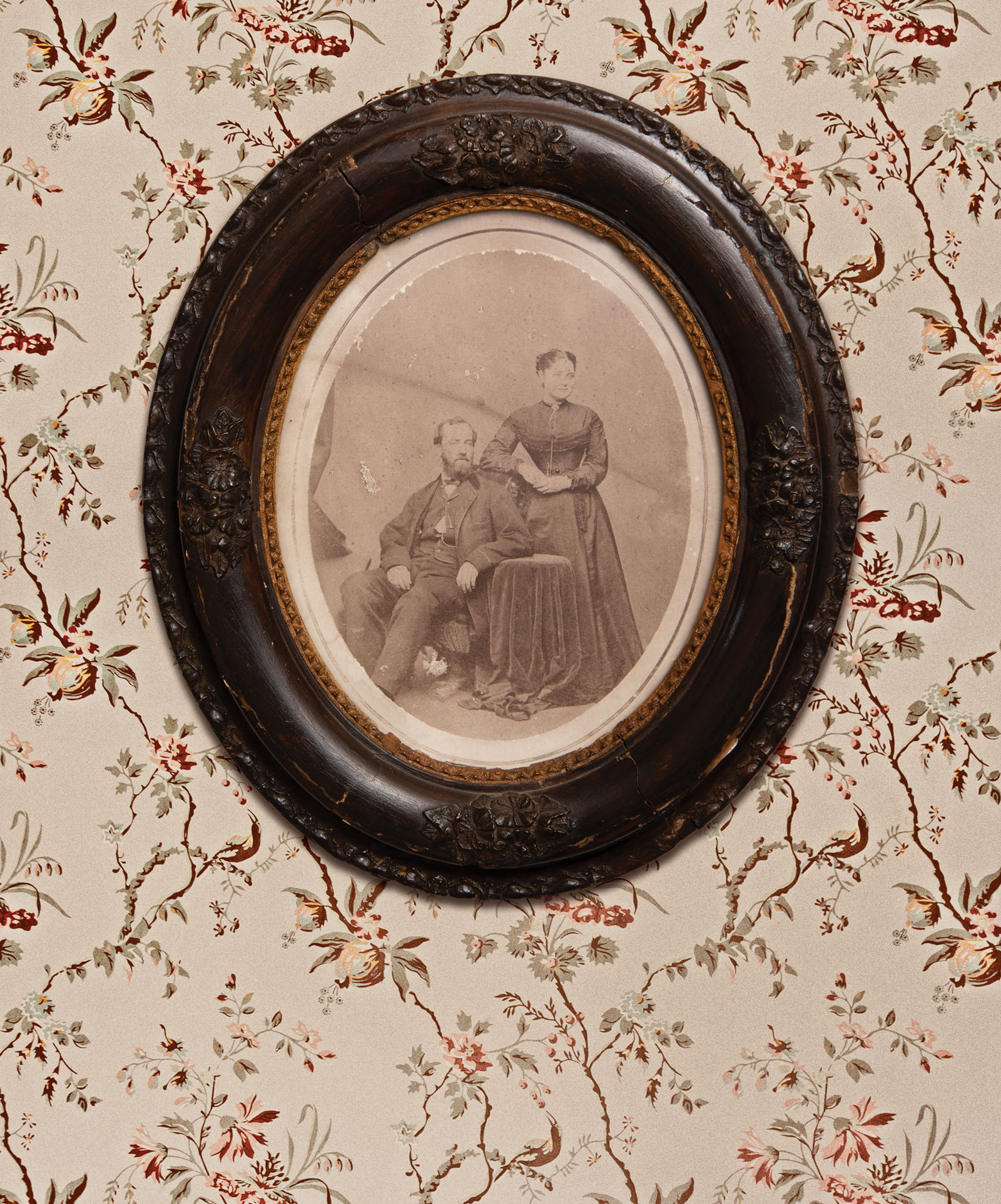Conley House

Surveys and interviews delve into decades of memories of the Conley family.
Tucked away in the middle of MU’s campus, the Sanford Conley House serves as a reminder of the rich history found in Columbia.
Citing the house as a “rare, local example of the Italianate style in Columbia, Missouri,” the application to the National Register of Historic Places noted that “most of these examples are concentrated in the metropolitan areas around St. Louis and Independence, Missouri.” The two-story house built in 1868 by businessman Sanford Francis Conley is characterized by a low-pitched mansard roof, arched doorway, deep bracketed caves and scalloped facings, and rose brickwork. The first floor of the home features seven rooms, two baths, and a sunporch. Five rooms and two baths make up the second floor.
The Conley House as we know it today is situated on the southeast corner of the intersection of Conley Avenue and Sanford Place — once a prime residential area for MU professors. According to the application to the National Register of Historic Places, other structures surrounding the Conley House in 1969 were “several more recently-constructed residences to the west. University parking lots are to the house and across the street to the northwest.” The house is one of the oldest surviving homes of the era before campus expansion.
The Conley House Roots
Sanford was born in 1838 on a family farm six miles north of Columbia. Interested in the business world, Sanford left the farm at age 15 to clerk at a dry goods store in Columbia. Sanford married Kate Singleton, a Christian College (now Columbia College) graduate, in 1868. The newlyweds lived at the corner of Third and Broadway in Columbia before moving to the Italianate home we now call the Conley House.
All six of Sanford Conley’s children were born in the house once sloped to Providence Road and the area surrounding it from Conley Avenue to Rollins Street.
As a farmer, merchant, and active community member, Sanford helped Columbia prosper. Sanford pursued his interest in the dry goods business, joining with John Samuel as a partner in a mercantile operation all while running a Columbia sawmill. Sanford was also one of the directors of the Exchange National Bank of Columbia and opened an agriculture equipment store, which he operated until he died in 1890 at the age of 52.
After Sanford’s death, the strain on family finances forced Kate to take in boards. The original five-acre lot was divided into parcels and sold. The Conley House was also remodeled — kitchens, sunrooms, bathrooms, and bedrooms were added to convert the original single-family home into two apartments in the late 1930s.
The Conley family owned the house for another 50 years after the renovations. Frank, the son of Sanford, lived in the downstairs apartment with his wife. Kate remained in the house until the late 1960s.
A Home of Memories
The Conley family intrigues those who continue to study the home today.
In the fall of 1986, nine MU undergraduate and graduate students performed an archaeological survey at the Conley House to gain information about the everyday lives of the Conley family. During the dig, the students found the house echoed the mood of the Victorian period when “pattern upon pattern was introduced throughout rooms” — olive green, umber, and ochre were popularly used together, with accents of cream, metallic gold, and teal.
The students also found an old English tipt teaspoon, various pieces of jewelry, an 1800s perfume atomizer, and the servants’ quarters foundation, including a sink and commode. Newspaper accounts of the 1903 wedding reception of the Conley’s only daughter, Helen Singleton Conley, described the wedding as “one of the social events of the year in Columbia.” Local newspapers reveled the decorations in the home’s parlor — palms graced the scene, red roses and ferns decorated the library, and mantels were banked in green.
In a 1970 interview, Helen said the parlor was rarely used except for funerals and parties. When the family had company, the double doors between the living room and parlor were opened to dance the Virginia Reel while Kate played the piano. George Miller, the son of Helen, recalled his “grandmother’s claim to fame on the piano was that she could play ‘Dixie’ with one hand and ‘Yankee Doodle Dandy’ with the other.”
Helen said the living room with the fireplace was the room the Conley family used the most. She had childhood memories of receiving lots of bananas on Christmas day and being frightened by the shutters that covered the black windows on the north side of the house. Helen also recounted Kate’s way of telling her boys they had to leave. According to Helen, at 10 p.m., Kate would lean over the upstairs rail and call down, “Oh daughter, would you bring me a drink?”
The Conley House Today
MU purchased the Conley House in 1980 to be a “cornerstone in efforts to beautify the Columbia campus.” The house was sold for $90,000 — a much lower amount than an initial $270,000 appraisal — after Chancellor Barbara Uehling expressed interest in renovating and preserving the house.
The Conley House was home to the Missouri Folk Arts Program, founded in 1984 by former MU professor Howard Marshall, for more than a decade. The Conley House is today part of the Museum of Art and Archaeology and is home to the campus writing program and MU Faculty Council.


